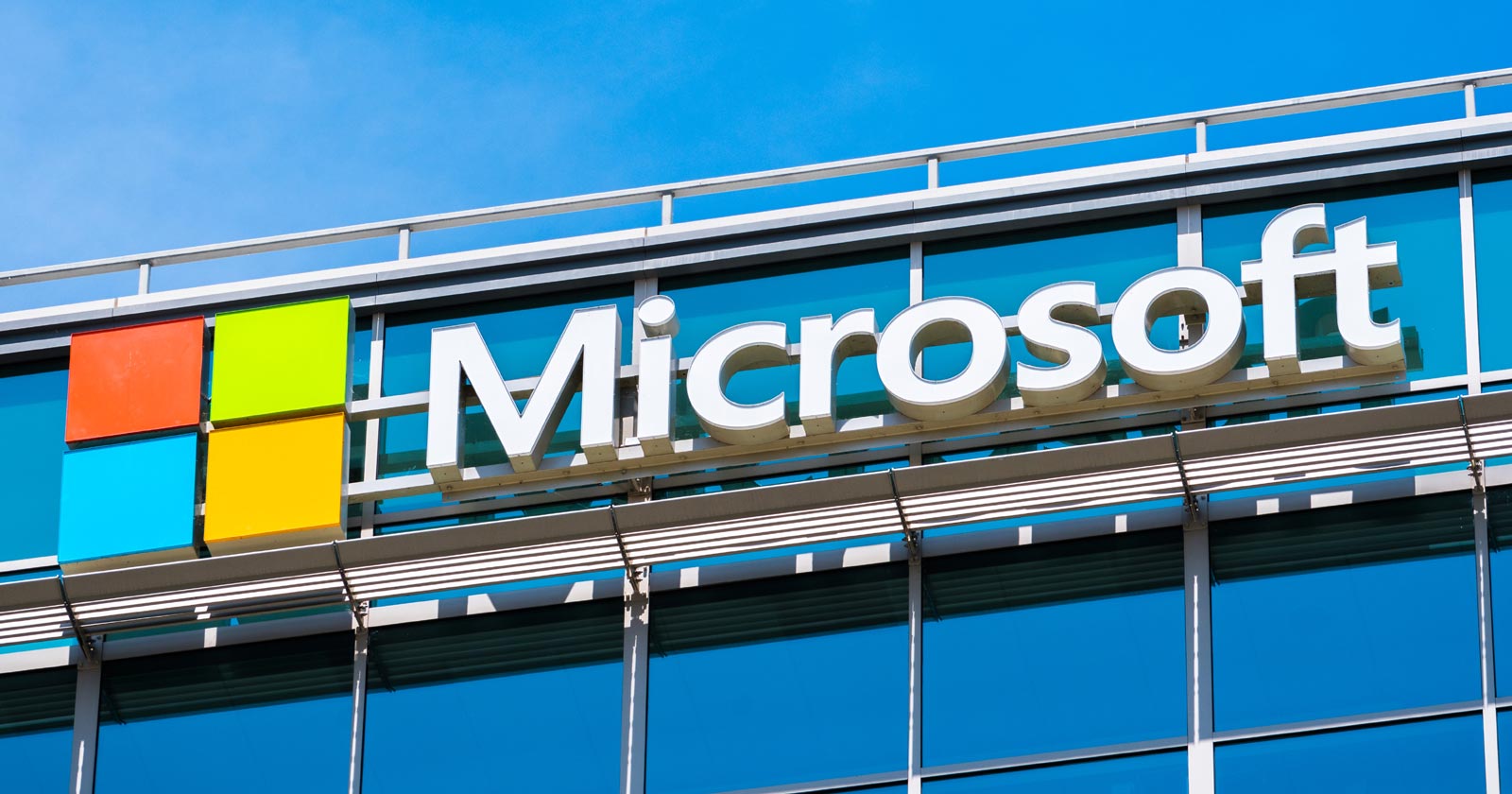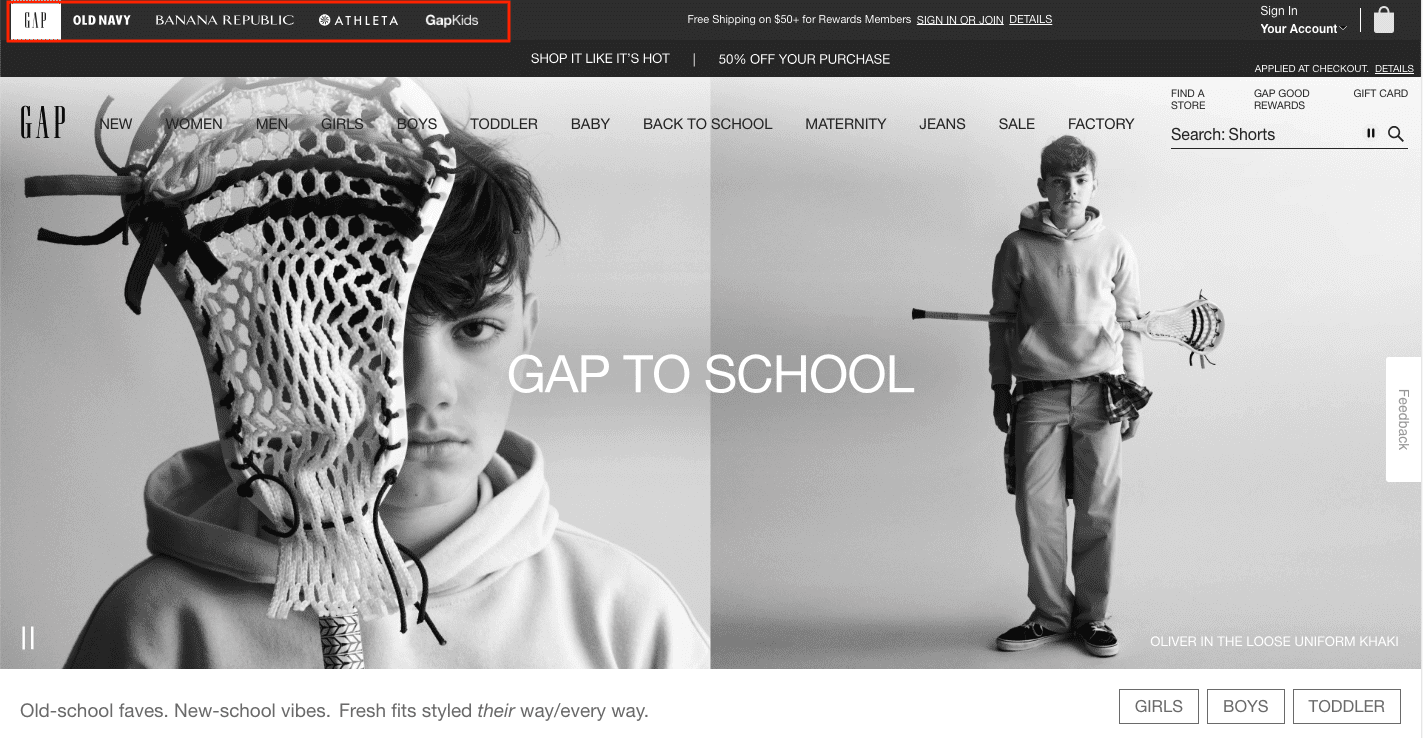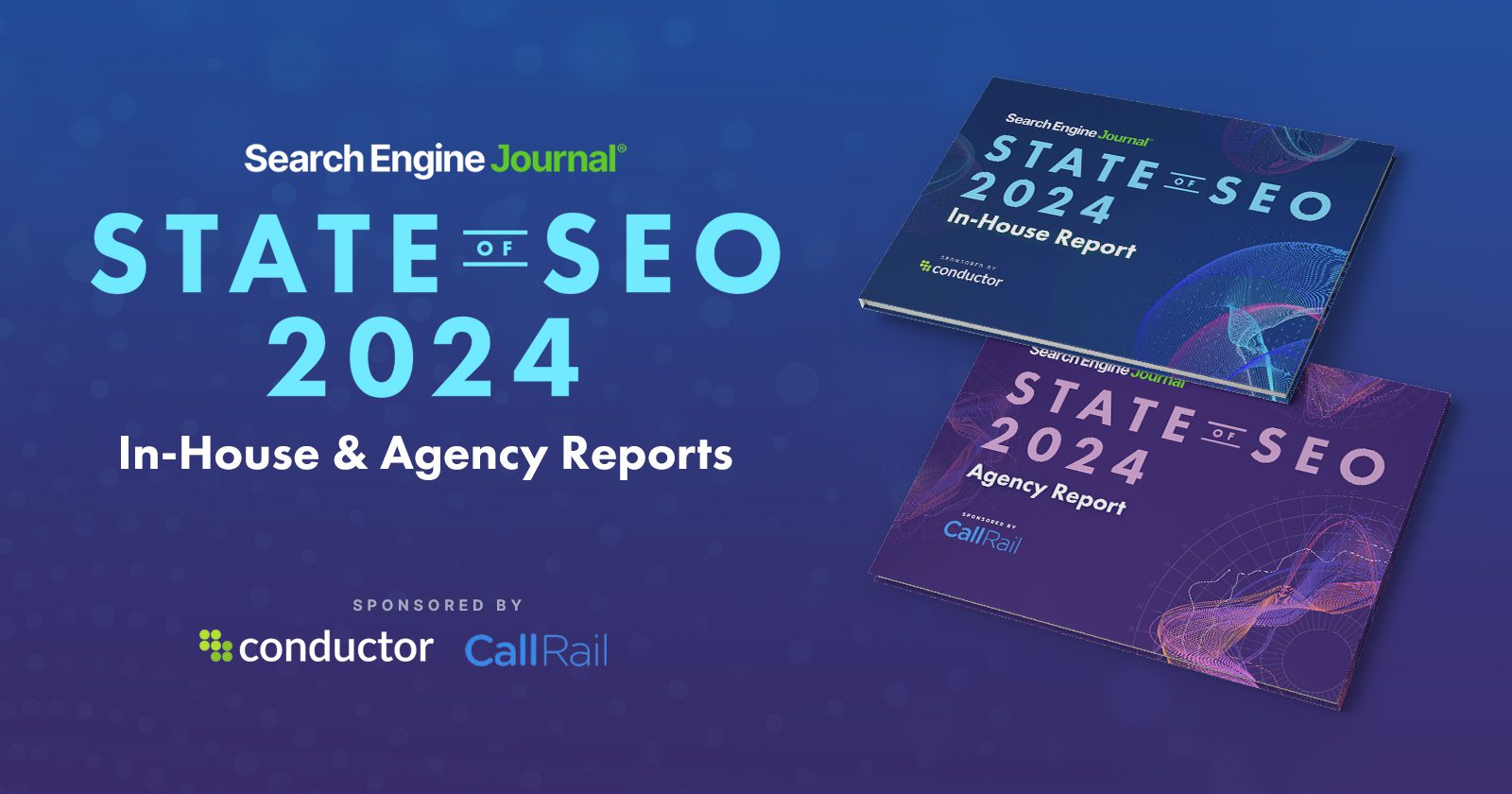The Complete Guide to Social Media Video Specs in 2023

Community managers are the all-stars responsible for fostering engagement, building relationships, and maintaining the integrity of online communities.


Community managers are the all-stars responsible for fostering engagement, building relationships, and maintaining the integrity of online communities.




A comprehensive social media report proves the value of your social marketing plan. It shows what you’ve accomplished, backed up by data.




Google announced the September 2023 Helpful Content Update that is expected to finish rolling out in two weeks. The update appears to loosens up on machine generated content while warning about 3rd party content hosted on websites or their subdomains.
Google also added additional guidance to their Helpful Content System documentation with new advice on what to do if a site lost traffic after a Helpful Content update.
Google has a system called the Helpful Content System for promoting quality content and reducing the search presence of content that is determined to not be helpful.
It is presented by Google as a system that works alongside all the other systems that together rank websites.
This system is primarily focused on identifying signals of quality that correspond to helpful content.
Google updated their Helpful Content System documentation to add guidance in three areas:
Google’s previous guidance on machine generated content emphasized that the Helpful Content system prioritizes content created by humans.
That part of the guidance is removed, signaling a change in Google’s attitude toward AI content to align it better with other seemingly contradictory guidance on AI content.
The original guidance:
“Google Search’s helpful content system generates a signal used by our automated ranking systems to better ensure people see original, helpful content written by people, for people, in search results.”
The updated guidance:
“Google Search’s helpful content system generates a signal used by our automated ranking systems to better ensure people see original, helpful content created for people in search results.”
There is a longstanding trend of hosting third-party content on the main part of a website or on a subdomain.
An example of this is news media websites hosting third-party credit card affiliate content on a subdomain.
The idea behind theses strategies may be that some of the main site’s ranking power would help the subdomain content rank better.
Google’s September 2023 Helpful Content update has made a change that may negatively affect websites that host third-party content anywhere on their website.
A new section added to the Helpful Content guidance advises:
“If you host third-party content on your main site or in your subdomains, understand that such content may be included in site-wide signals we generate, such as the helpfulness of content.
For this reason, if that content is largely independent of the main site’s purpose or produced without close supervision or the involvement of the primary site, we recommend that it should be blocked from being indexed by Google.”
Obviously, those who publish guest posts should pay attention to this guidance, particularly the part about the content being relevant to the main site’s purpose or if it is, if the content was created with close supervision.
Lastly, Google added new guidance on how to recover should a site be affected by any Helpful Content Update.
The new paragraph added to the documentation recommends identifying unhelpful content and removing or replacing it.
Google’s new guidance:
“If you’ve noticed a change in traffic you suspect may be related to this system (such as after a publicly-posted ranking update to the system), then you should self-assess your content and fix or remove any that seems unhelpful.
Our help page on how to create helpful, reliable people-first content has questions that you can use to self-assess your content to be successful with the helpful content system.”
Read Google’s documentation on the Helpful Content System:




Pin down the social media metrics that really matter and learn how to track them to build a winning social media presence.




Mark Zuckerberg, CEO of Meta, offered remarks to the closed door Senate AI Insight Forum that sought to encourage continued American leadership in developing AI as a safe path toward providing the economic benefits of AI.
He voiced strong support for the role corporate America setting the technological standards in open source as well as private closed source AI development.
Mark Zuckerberg especially promoted the benefits of open source AI:
“…open source democratizes access to these tools, and that helps level the playing field and foster innovation for people and businesses, which I think is valuable for our economy overall.”
One of the first things the CEO of Meta spoke about was innovation and safety.
He also reminded that AI is not just generative AI like ChatGPT.
He encouraged oversight across the different forms of AI such as robots, vision and natural language processing.
His statements conveyed that he welcomed oversight and suggested there are two issues that must be addressed:
Zuckerberg promoted open source AI as a way to democratize technology.
He promoted both closed source and open source AI as a safe because companies consciously build safety alignment into their products and the collaborative nature of open source helps to identify unsafe or unwanted outcomes.
He said:
“…it’s on companies to make sure we build and deploy products responsibly.
At Meta, we’re building safeguards into our generative AI models and products from the beginning and working with others to collaborate on establishing guardrails.
We think policymakers, academics, civil society and industry should all work together to minimize the potential risks of this new technology, but also to maximize the potential benefits.
…it’s generally accepted that open source software is safer and more secure, because more people can scrutinize it to identify issues and then share and propagate solutions that can then be used to harden systems.”
But the statement that opensource software is safer and more secure is undermined by recent events.
Hugging Face recently released Falcon 180B, an open source LLM that has no safety guardrails at all, yet is so powerful that it rivals Google’s most powerful AI, Palm 2.
Hugging Face released Falcon 180B as a base version with the understanding that it’s up to the users to make it safe.
Zuckerberg also promoted an American leadership vision of AI technology.
America currently leads the world in AI innovation.
The scale of of the human resources in America’s Silicon Valley companies dwarfs that of any other country.
No other country or region comes close to the scale of American innovation.
OpenAI just announced they’re opening an office in Dublin in order to cultivate a European-based AI industry, further cementing American leadership.
But Zuckerberg encouraged the idea of the United States government working together with industry in order to maintain American technological leadership and innovation.
Zuckerberg explained:
“…I think it’s important that America continue to lead in this area and define the technical standard that the world uses.
The next leading open source model is out of Abu Dhabi, and other countries are working on this too.
I believe it’s better that the standard is set by American companies that can work with our government to shape these models on important issues.”
Mark Zuckerberg was curiously vague on what should happen once we reach the point of superintelligent AI, which alludes to Artificial General Intelligence (AGI).
AGI is a type of AI that can learn and reason like a human in a very independent manner, that can solve unfamiliar problems the way humans do, by relying on current knowledge.
There is disagreement as to how to even recognize AGI, although Sam Altman personally defines it as an AI that can innovate science that is impossible for humans.
Zuckerberg said:
“Now, if at some point in the future these systems get close to the level of superintelligence, then these equities will shift and we’ll reconsider this approach.”
In the end, Zuckerberg expressed a positive outlook for partnering with the government.
Although it is too early to suggest what that partnership, oversight or regulation should look like, Zuckerberg’s remarks appeared to welcome that partnership as a way to help the United States to continue holding the technology lead in artificial intelligence.
Read Mark Zuckerberg’s comments:
Mark Zuckerberg’s Remarks at AI Forum
Featured image by Shutterstock/Geena123




Learn how to use social listening to monitor social media channels for mentions of your brand, competitors, product, and more.




Microsoft announced a new conversational question answering model that outperforms other methods, answering questions faster and accurately while using significantly less resources.
What is proposed is a new way to rank passages from content using what they call Generative Retrieval For Conversational Question Answering, which they named GCoQA.
The researchers write that the next direction to take is exploring how to use it for general web search.
An autoregressive language model predicts what the next word or phrase is.
This model uses autoregressive models that use “identifier strings” which in plain English are representations of passages in a document.
In this implementation, they use the page title (to identify what the page is about) and section titles (to identify what a passage of the text is about).
The experiment was carried out on Wikipedia data, where the page titles and section titles can be relied upon to be descriptive.
They are used to identify the topic of a document and the topic of the passages contained in a section of the document.
So it’s kind of like, if used in the real world, using the title element to learn what a webpage is about and the headings to understand what the sections of a webpage are about.
The “identifiers” are a way to encode all of that knowledge as a representation, which is mapped to the passages on the webpage and the titles.
The passages that are retrieved are later put into another autoregressive model in order to generate the answers to questions.
For the retrieval part, the research paper says the model uses a technique called “beam search” to generate identifiers (representations of passages from the webpage) that are then ranked in order of the likelihood of being the answer.
The researchers write:
“…we utilize beam search… a commonly-used technique, to generate multiple identifiers instead of just one.
Each generated identifier is assigned a language model score, enabling us to obtain a ranking list of generated identifiers based on these scores.
The ranking identifiers could naturally correspond to a ranking list of passages.”
The research paper then goes on to say that the process could be seen as a “hierarchical search.”
Hierarchical, in this scenario, means ordering the results first by page topic and then by the passages within the page (using the section headings).
Once those passages are retrieved, another autoregressive model generates the answer based on the retrieved passages.
The researchers found that GCoQA outperformed many other commonly used methods that they compared it against.
It was useful for overcoming limitations (bottlenecks) in other methods.
In many ways, this new model promises to bring a profound change to conversational question answering.
For example, it uses 1/10th the amount of memory resources than current models, which is a huge leap in efficiency, plus it’s faster.
The researchers write:
“…it becomes more convenient and efficient to apply our method in practice.”
The Microsoft researchers later conclude:
“Benefiting from fine-grained cross-interactions in the decoder module, GCoQA could attend to the conversation context more effectively.
Additionally, GCoQA has lower memory consumption and higher inference efficiency in practice.”
However, there are several limitations that need solving before this model can be applied.
They found that GCoQA had limitations due to the use of the “beam search” technique, which limited the ability of GCoQA to recall “large-scale passages.”
Increasing the beam size didn’t help matters either, as it slowed the model down.
Another limitation is that while Wikipedia is reliable about using headings in a meaningful way.
But using it on webpages outside of Wikipedia could cause the model to run into a stumbling block.
Many webpages on the Internet do a poor job of using their section headings to accurately denote what a passage is about (which is what SEOs and publishers are supposed to be doing).
The research paper observes:
“The generalizability of GCoQA is a legitimate concern.
GCoQA heavily relies on the semantic relationship between the question and the passage identifiers for retrieving relevant passages.
While GCoQA has been evaluated using three academic datasets, its effectiveness in real-world scenarios, where questions are often ambiguous and challenging to match with the identifiers, remains uncertain and requires further investigation.”
Ultimately, the researchers stated that the performance gains are a strong win. The limitations are something that need to be worked through.
The research paper concludes that there are two promising areas to continue studying:
“(1) investigating the use of generative retrieval in more general Web search scenarios where identifiers are not directly available from titles; and (2) examining the integration of passage retrieval and answer prediction within a single, generative model in order to better understand their internal relationships.”
The research paper (Generative Retrieval for Conversational Question Answering) was published on GitHub by one of the research scientists.
Visit that GitHub page to find the link to the PDF.
As sometimes happens, research papers have a way of disappearing behind a paywall, so there’s no guarantee that it will still be available in the future.
GCoQA may not be coming soon to a search engine.
The value of GCoQA is that it shows how researchers are working to discover ways to use generative models to transform web search as we know it today.
This could be a preview of what the search engines of the relatively near future may look like.
Read the announcement and research paper abstract:
Generative Retrieval for Conversational Question Answering
Featured image by Shutterstock/Sundry Photography




Joining a local accelerator program was an important factor in successfully securing grants for my community-based business.
Joining this program was truly eye-opening.
Accelerator programs have the purpose of helping businesses (usually start-ups) accelerate their business growth.
When you join a program like this, you get access to advisors who will help you further develop your idea, get clear on your business model, and connect you with investors.
In the early spring of 2022, I joined a local accelerator program called SCAPE and started learning more about grant funding and outside investors.
Before that, I wasn’t really aware of grants, and I definitely wasn’t aware that this could be a reality for my business.
I knew about investment companies, private equity, and angel investors, where another business invests money into your business in order to have equity or a percentage of ownership.
This is considered dilutive funding.
For example, if I were to take money from an outside investor, they, in return, would get a percentage of my business. So that would mean I no longer owned 100% of my company, and therefore have diluted my ownership.
Whereas grants are effectively free money.
There are some strings attached to grants, but for the most part, grants are non-dilutive.
They grant you money for a purpose, but they’re not getting any ownership stake in your business.
I never in a million years thought that this would be something that was available to my company. Now that I stop to think about it, I’m not sure why, but I just didn’t.
Until I joined SCAPE and learned about the AI (Advanced Industries) Grant in Colorado.
I was aware of the AI Grant in Colorado but didn’t seriously consider it because I just assumed I wouldn’t be eligible. After all, “advanced industries” sounds super fancy.
That changed when I overheard a conversation between a business owner and a member of the public.
It was the end of May 2022, and I was with my husband at this event in Flagstaff, Arizona, called the Overland Expo. We were there looking at an in-bed camper made by a company called Supertramp Campers.
I remember I was walking around the side of the camper when I overheard the conversation, in which the man was talking about how the company had recently been awarded $250,000 in free money from the state of Colorado.
At that moment, my ears perked up – hang on, what is he talking about?
I immediately Googled it, and sure enough, it came up. The very same grant that SCAPE had been telling me about.
The very same grant that I didn’t really think I would be eligible for.
At this time, I hadn’t decided whether I’d go for it or not.
But when I overheard him say that they received it, I thought to myself: if a company that makes campers received an Advanced Industries grant, maybe GeekPack could, too.
At that point, I decided to look into this in more detail.
And so I did.
After a lot of research, I decided: I’m doing it. I’m applying for a $250,000 state grant.
It was September 1st, 2022.
This first application was very time-consuming. It’s a very long grant, and this first time around, I did it completely by myself.
I had never applied for a grant before, and despite getting some advice from SCAPE and having a letter of support from them, I didn’t really know what I was doing.
I felt like there was a lot of momentum around that time, from finishing the SCAPE Accelerator program to signing a partnership with Udemy and launching our new membership.
I had good letters of support and heard from other people familiar with this grant that it was a very strong application. They thought I had a really good chance.
So there was nothing more to do except wait for the results.
While working on my Advanced Industries Grant application, I got an email from Brittany, one of my advisors in SCAPE.
She forwarded me an email about another grant opportunity through an organization called Hello Alice, sponsored by Tiger Global Impact Ventures.
It was called The Accelerate(HER) Fund, and it was for $50,000.
As I had done all of that work for the AI grant application, I decided to apply using the same copy.
I am very good at procrastinating and doing things last minute (in fact, I do some of my best work last minute). And for both of these applications, I definitely left it down to the wire.
So it was a huge relief to hit submit because it was such a big thing taking up a lot of my time.
Even though I submitted the AI grant application first, Hello Alice’s results came in before AI’s.
I was caught off guard on a call with the program officers when they asked me: What would you do if $50,000 just appeared in your business bank account?
My immediate answer was – I’d hire more team members for GeekPack.
And to that, they replied, “Well, you’d better get your job descriptions ready, because you’ve received the grant.”
Just like that, I had $50,000 extra dollars to bring GeekPack closer to our long-term vision.
This moment and this grant were a turning point for me, making it possible to reach the next level. I was so overcome with joy and gratitude (and shock, frankly) that I started crying right there on the phone.
The news from the Advanced Industries grant came a few weeks after that.
I remember this very clearly – I was sitting in a chair in the living room when I saw the email come in on a Friday afternoon.
It was not what I was hoping for; I got a devastating no.
I immediately burst into tears and felt like I had disappointed everyone around me. I felt like I disappointed my team and the community.
I felt like this was a big setback in the business growth.
And it was just a real knock to my pride. I was sure I had such a strong application.
But even among all these feelings, when I saw that I didn’t get it, I knew immediately that the AI grant opens twice per year, and I would reapply.
And I remember thinking to myself, “They’re going to get sick of seeing me reapply, and reapply, and reapply – as many times as it takes.”
It was disappointing to get a no, but it was also very reassuring to know that another organization had believed in us.
We had $50k from Hello Alice, and that was an incredible boost to try and get the AI grant again.
So on March 1st, 2023, I submitted this application for the second time.
About a month later (one year after I overheard that conversation), I got an email saying we were awarded the grant.
For this second application, two things made a huge difference:
Around November 2022, one of my mentors from SCAPE introduced me to someone at Wyoming Women’s Business Center (and again, everything comes back to how valuable this accelerator program was).
We got on a call, and I told her about our new membership program, The GeekPack Collective, and how we’re expanding.
We had just signed a partnership with Udemy in September, and we wanted to work with other organizations and start our B2B side of the business.
We launched The GeekPack Collective in January 2023, and we also signed a B2B contract with the Wyoming Women’s Business Center, which has put women through the program with custom digital marketing cohorts based on the needs of their community.
This was the beginning of GeekPack Partners.
This second grant application was very specific to our B2B program and how we would dedicate a full-time team member to running it.
It was also around that time that I started working with Ashley, who was doing some copywriting for the membership and who also used to be a grant writer.
This time around, I had her work on the application copy with me, and her skills made a huge difference. I remember Ashley telling me that the grant application needed to tell a story.
She did a phenomenal job at applying for funding by telling a story about where we’ve been, where we are now, and where we’re going.
Because of this, I had a much stronger application with a B2B case study and a very specific goal for this funding.
And this second application was not only accepted but it was fast-tracked.
I didn’t need to go before the board. I didn’t need to present or justify to anyone.
They really believed in the GeekPack Partners Program and wanted it to happen. So they actually fast-tracked the application, which was a huge validation, especially after not getting the grant in the first round.
It’s safe to say that these grants had a huge impact on my business.
Here are a few reasons why I think you should also start considering this for your business.
As I mentioned before, grants don’t dilute any of your ownership. You get the money, and you get to keep 100% of your company.
The language we used for the second AI grant application, specifically about the B2B, has been repurposed for so many other things.
Getting this grant was also how we set up our B2B, the newest initiative of the business.
Without this money, we wouldn’t have been able to start the GeekPack Partners program, and we now have a full-time employee running it.
When you are awarded a grant, other organizations are more likely to say yes to you.
Because someone else already believed in you and validated your idea, it is less risky for them to do the same.
This brings us to the last one.
One of the biggest takeaways from this process has been the validation; all these outside organizations see the value in my business.
Whether it’s a privately funded organization, such as Hello Alice, or a state fund, such as the Advanced Industries Colorado grant, all of these people believe in what we’re doing, want to support it, and see it come to fruition.
That’s a huge boost of confidence. And that’s probably been one of the biggest impacts these grants have had on me as a business owner.
Getting $300,000 of free money means a lot.
It allowed me to invest in team members and cover some hard costs, but the most impactful result was gaining the ability to fund a new program before we actually had any revenue from it.
GeekPack has a big vision: We are changing the face of tech forever by bringing over 1 million voices into the conversation by 2030.
Our B2B arm of the business partners with mission-driven organizations, such as Economic & Workforce Development and employers striving to uplift communities and close the digital skills gap.
This allows us to expand our reach and impact other communities as well.
So GeekPack Partners is how we will reach 1 million people, and these grants are helping us get this new venture off the ground and scale it before it actually starts to make money.
This whole process was not only validating for me – it validated our business model.
It was validating for the GeekPack team and what we’ve built so far.
It was validating for our community.
And a lot of this comes back to my personal why and our company’s mission – which is reach and impact.
I wouldn’t have this amazing team if every single one of us didn’t believe in what we’re doing and the impact we’re having.
Because, at the end of the day, GeekPack is bigger than me. GeekPack is bigger than every person on the team. It’s bigger than our community.
And the best part? Everyone gets to be a part of it.
More resources:
Featured Image: Antonio Guillem/Shutterstock

Over the last 20 or so years, I’ve seen many “interesting” opinions on what to look for to find the best affiliate program where you can make money.
Some people recommend you go for the highest payouts, and others will say network earnings per click (EPCs) are vital.
Unless you’re intercepting the store or service provider’s traffic, these could be warning signs and not signals that the affiliate program is good. And this is why I’m writing this post.
“What is the best affiliate program?” is one of the most common questions I get asked when speaking at conferences – especially publisher and SEO ones.
So, I’d like to share seven of the most important factors I look at before promoting an affiliate program or when I have two good potentials and cannot determine which to test first.
In addition to metrics, you’ll also learn the reasons why each matters and, in many cases, how to test and see if it will apply to your situation.
This is how you can find an affiliate program with the best chance of making money.
This list isn’t in order, except for the first one. Before we jump in, I mention “testing” a lot throughout. The most basic affiliate tracking test is:
Do not get distracted by cash back, coupons, multiple payments being available, ads running across the site for other companies or brands, etc. The goal is to see if basic tracking is working, not attribution testing.
Now here’s the list of what I look for when selecting affiliate programs, and what I recommend you look for, too.
The most important thing before joining an affiliate program is to write to an affiliate manager through the contact information in the network.
In the email, introduce yourself, share why you’re a good match, and how you’ll provide value to the brand.
It can also be a good idea to ask a few questions about the program and tracking so you can gauge their skill and knowledge level. Plus, asking questions gives the affiliate manager a reason to respond.
If the affiliate manager or point of contact does not respond within two business days, move on.
If an affiliate manager is not responsive when you’re trying to send them business, what happens when tracking breaks or sales go missing?
If they don’t respond to you when things are good, you can bet you’ll be ignored when they are bad.
And affiliate program problems happen regularly. The only exception to joining without a response is if the affiliate manager is on vacation and you get an auto-responder.
In this situation, set a reminder to check your email two days after their return.
When asking questions, choose yours wisely. Some affiliates will ask if there are product samples, vanity codes, etc.
But remember that affiliate programs are not meant for you to get free products; they’re for you to drive customers to a store and earn commissions.
Asking upfront and without driving sales first can make you look like you’re joining for free product and not serious.
Share your business plan with the manager using the product, and avoid saying you’ll “do a review.” Doing a review gives you fewer opportunities to make money in the long run and has much less value for the brand than a “how to” guide or solution-oriented content.
Other questions to ask can include that you’re looking for marketing strategies, any backup tracking systems that are used, how they account for cross-device tracking in the affiliate program, and what the attribution lines look like or where you’ll fall on the attribution lines if you join.
When the affiliate manager responds, ask for specifics if you want to understand their skill and knowledge levels. But this is not vital to your success in the program.
If the manager is a marketing strategist and gives you specific details vs. generic statements, this is a very good sign. Good affiliate managers will look at your site and give you ways to improve or drive sales from the get-go.
They’ll never say, “Add a link,” “Use a coupon code,” or, “Do a review.”
If the answer is not specific and does not have examples or details, the person likely does not know marketing and is hoping you won’t know or question them. It isn’t their fault; many companies put entry-level people into the affiliate manager role.
Or the company doesn’t see the affiliate marketing channel as high-value and high-impact, so they don’t want to pay for a marketing strategist or generalist.
The main thing is that you get a response.
Don’t count the program or affiliate manager out for not having knowledge – being a strategic marketer is your job, not theirs.
There’s no shortage of stores that sell cell phones or t-shirts, but the places you can send your traffic to will have different target audience demographics and selling points that speak to those audiences.
If you send your traffic to the wrong experience, you’ll likely see a lower conversion rate and make less money.
The price of the cell phone or shirt may matter to your audience, and both vendors are discounted pricing, but the user experience for conversion rates also includes:
If these elements do not match your referral’s needs, they may not convert as well as a store that does.
This is why it is important to find out who the main customer base of each retailer or service provider is.
Pro tip: You can find your demographics within your analytics package and share how to find this data with the affiliate manager. This helps the affiliate manager learn something new and makes you a marketing resource for them. Being their trusted resource gives you more opportunities to grow in the program.
If you don’t know how to use analytics, no problem. Start by surveying your own audience on your site using forms, pop-ups, and newsletter blasts to find out what is important to them.
Ask them about price points, or if they’re willing to pay more for things like security and stability (IT), luxury, and service (hotel stays or clothing). Maybe free shipping offers matter more than a percentage off, or it could be variations and options like colors, sizes, and expedited shipping (important for last-minute gifts or deadlines).
By knowing what matters to your audience and your visitor demographics, you can better match their needs to the affiliate programs you promote. This could lead to an increase in conversions and your income.
Example: Let’s pretend we have two affiliate programs, A and B.
Even though program A’s payout is higher and the price point is better, B may meet the needs of your audience more and convert better, helping you earn more money.
And don’t forget the discounted price may mean a lower AOV. If the commission is percentage-based and not a flat payout, that lowers your earnings.
This could mean the higher price point with a lower percentage could have higher commissions in the end.
The deciding factor here is a better demographic match with age, income, rural/urban/suburban, etc., and the trust builders.
Some things often not considered are live chat and traffic leaks.
A traffic leak is when you send your traffic to the merchant, and the merchant allows it to leave their website or makes it very easy for your referral to click another affiliate’s links.
Years ago, some big box retailers used to have people place orders online and then pay in person when they picked them up at the store.
This caused your commissions not to be tracked, which is why they were considered a leak.
But I haven’t seen this in a long time.
I am seeing more customer service and live chat taking orders and, in some cases, potentially bypassing the affiliate tracking.
Here’s how I test and see if there’s a leak or overwrite.
Go to each affiliate program you’re considering joining and look for customer support, especially live chat features. Start a conversation with support and/or live chat and ask if they can take your order.
If live chat or phone support takes the order and you do not use the shopping cart, your sale will likely not be tracked. In some cases (not very often, though), live chat may give the user a link to click on, which can add a touch point and override affiliate tracking.
More commonly, live chat may process the order without your browser or device being in the loop. When that happens, the live chat vendor gets credit for the sale, and you don’t get your commission.
Not all live chats take orders and bypass the shopping cart, and sometimes phone support will help you but require you to go through the shopping cart.
As long as the sale stays in the cart and through your affiliate tracking, you should be fine. But you’ll need to test.
Pro tip: If you’re going to cancel the order because you were testing, let the affiliate manager know you were doing a test before joining so you don’t start off on a bad note.
Bonus tip: I don’t recommend canceling the sale. Having the product on hand lets you speak from real-life experience, which is important for any review content and building E-E-A-T. You can take photos with the product in hand and create videos that show the solutions are real and can be done.
There are other forms of leaks. It could be when the user searches for a coupon and does a Google search at checkout.
The person leaves the store to find a code, clicks a coupon affiliate’s link, and if attribution is not set up correctly, you lose the commission at the last second.
The store could have external ads within their own site driving your referrals to a new site where they convert.
If the person doesn’t come back and convert within the cookie life or wipes your tracking, you lose the commissions – even if they come back and buy.
Companies with multiple brands may link to those brands as navigational elements, and if the programs do not use the same tracking system and merchant IDs to commission you across shopping carts, you could lose sales to the other brands.
Some networks like ShareASale make it easy with their stores connect feature. I believe Impact and Everflow offer easy multi-cart integrations too.
Let’s look at an example. Please note that I have never or at least not recently (within the last 10 years), worked with the Gap, seen its tracking, or asked the company about it.
The example below is because I needed a brand that has its other stores linked from the header. It does not mean Gap’s affiliate program is bad or isn’t tracking across stores.
It is big enough to have cross-brand tracking, which would be a huge benefit to its affiliates, but I have personally never tested this – so again, test for yourself.






The test here is to:
I’m not using my current clients because none are actively doing this, and this is not a self-promotional post. That’s why I chose Gap. I have no relationship with the company (as far as I know), and I love Banana Republic. It makes amazing T-shirts.
And there are more types of leaks.
Multi-payment software service providers have joined affiliate programs and are installed in a merchant’s checkout as a benefit to the customer.
Brands that have marketplaces and allow clicks to go external are also leaks.
You could find that the marketplace or certain SKUs within the marketplace are not commissionable, but the products are the ones you’re promoting. It’s not a leak, but it is similar.
These are all normal things and are part of the industry.
But don’t panic; most single network programs can set up protections for your commissions, which is why we test. Each store and each program is different and makes decisions based on their goals. They’re doing what they feel is right for them, and that is okay.
It is your job to test and see where the commission goes so you can protect your own revenue stream. Leaks and end-of-sale partners are part of the ecosystem; they’re not going anywhere.
It doesn’t mean they are good or bad. The brand makes decisions for the brand’s best interest, and you need to make decisions based on yours.
You have no shortage of affiliate programs you can promote, so don’t get discouraged if one is filled with leaks and does not have attribution set up correctly.
Pro-tip: Ask for higher commissions after attribution testing if the commissioning lines don’t work.
If you’re a top funnel partner and you introduce customers to the brand (this is different than new to file), your touch points are the most valuable because you control where the user goes and which brands they learn about – not if they make a final purchase. Without you, the store doesn’t get the sale at all.
Higher commissions do not mean more money or that it is a good affiliate program.
Sometimes they mean the program is in shambles, the company is desperate for sales, or they’re about to churn and burn.
That is an extreme situation, but it happens.
Other times they have to make up for leaks and low conversion rates.
There are also mixed payment models to consider. Here are two examples. One is real life from my old music niche site; the other is something I’ve tested over the years and used as selling points for affiliate recruitment.
I was lured into trying to sell tickets to shows with a really nice custom commission from a couple of ticket vendors. I barely made anything promoting the tickets, even though the traffic was reviews of shows and had a high intent to purchase.
A smaller program offered me less than $0.30 per verified lead for the same traffic. I wasn’t making money on tickets, so I said why not. It turns out my traffic did convert on the lead program, and after a while, they upped me to a dollar or a few dollars per conversion because the quality was good.
Yes, a $300 ticket to a show would have been a nice commission, but I wasn’t earning it.
My money came from a program with the smallest payout in the space.
Then eventually, I shut the site down because I was starting my agency, and the site got hacked through a plugin vulnerability and killed readership. (Queue the violin and pity party.)
Suppose program A has a 25% commission and program B has a 40% commission. Both websites have equal audience experience and conversion rates, and both have a 90-day tracking gap.
The one difference is that program A is using database tracking and not cookies, so once the customer is locked into your account, those commissions are yours.
If customers reorder every 60 to 70 days, then program A is actually paying roughly 50% because of the second purchase in the timeframe. And the same thing applies to recurring commissions.
Let’s pretend program A is 10% recurring and program B is 40% one-time. If the average life of the customer is five years, then program A can be more profitable, especially if prices increase. You’ll earn 10% five times vs 40% one time.
This is very common in B2B programs and SAAS.
Program B is great for short bursts of revenue, but program A sets you up for consistent long-term revenue and more money overall.
With all else equal, and if program A doesn’t close, A is more profitable than B because the total earned is more than the single payout.
A big red flag for me is a high network EPC. EPC normally means earnings per click. When the network EPC is high, you can bet something fishy is going on.
Go to Google or Bing and type the brand name + coupons in. Look at the PPC ads and the organic results.
You’ll likely find these are active affiliates, which is inflating the numbers because an affiliate click at the end of the checkout will always have abnormally high conversion rates.
These partners inflate the EPC, and if attribution isn’t set up correctly, you may lose a portion of your sales to these affiliates even though you rightfully earned the commission. That is why it is a red flag and why you should test.
And the same applies to low EPCs. If the program has a low network EPC there could be tracking or conversion issues. But don’t count it out.
Use the short and long-term EPCs. I’ve had situations where our EPC dropped substantially on one timeframe but not the other.
We had a large emailer do a blast that decimated the EPC numbers, and then the numbers returned to normal over the next few months as the email campaign impact was offset.
The only EPC number that matters is your personal one.
Once you’ve joined the program and sent a few hundred visitors, look to see what your EPC is. If you’re in multiple similar programs, look to see where you’re converting best.
Your personal EPCs are where you can begin testing and eliminating to find the most profitable affiliate program for your specific audience.
And remember, as your site grows and your audience gets larger, or you attract new types of SEO keywords and demographics, EPCs shift. Do a comparison once a month or once a quarter to see if they’re changing, and adjust your links accordingly.
Pro tip: Ask the affiliate manager for the SKUs and products you’re selling with color and size variations. If there’s a heavy “skew” towards a specific “SKU” variation, change the images in your promotions out to the ones your referrals buy more often.
This could increase your clickthroughs and sales numbers. I.e., if you’re promoting the pink and large version, but everyone is shopping for green and medium, try the green and medium one instead.
Find out if there is a private program, second network, or sub-affiliate networks that are not part of the main program. Brands don’t want to pay two commissions on the same sale, so only one affiliate network will normally win out.
This is where attribution and touch point based commissioning no longer work and where affiliate managers may not fully understand why.
Let’s pretend we have two networks, A and B. Here are a couple scenarios.
You are on Network A and did a video about how to install a fridge and recommended a specific wrench.
You sent a customer to the store for the wrench, and they have attribution testing so that an end-of-sale touch point like a coupon site showing up for “Brand + coupons” cannot overwrite your commission. But that coupon site is actually in Network B.
If the shopping cart, not the affiliate network, does not automatically commission Network A, and also the top funnel click in Network A, you lost your commission to the coupon site in Network B.
Network A will not be able to track it back because the shopping cart is not set up for touch point commissioning. You earned that commission, but because the program is on two networks, you lose the commission even though the network you are on is set up correctly.
Remember, Network A being set up with proper tracking and commissioning doesn’t matter because the shopping cart is missing the correct logic code.
You promote a general product and send a customer from your listcicle to the store through Network A. Network B is where the review partners are.
Reviews build trust for the consumer but also add a new touch point from a competing affiliate network.
Many times you’ll find split commissions in Network A, where you get 60% and the review partner gets 40%. But because this is a second system, chances are Network B will take the sale because the shopping cart is not set up for conditional logic.
Companies with multiple programs rarely build their shopping cart attribution to the levels needed, and that is the problem. The commissions here likely won’t get split and you won’t earn anything.
You are on Network A and using a subnetwork’s links.
Network B has a click, and the shopping cart is programmed for Network B to lose out to Network A every time. This should be correct.
Currently, the sub-affiliate will get the commission, and you get paid.
Suddenly, another affiliate in Network A or another affiliate in the sub-affiliate network has a click.
Now it is up to two factors outside your control to decide if you earn anything.
This is why it is always better to not use subnetworks when you can avoid it. Join the affiliate program directly when you can.
But there are plenty of situations when they are needed, and the sub-affiliate networks can be big time savers and have custom payouts helping you earn more. So don’t count them out.
Some are as easy as adding JavaScript to your site and backfilling where you forgot to include an affiliate link.
The only way to know if you’ll get paid is to test.
Chances are it’ll be in Network B with the second affiliate, even though you earned that commission.
In the case of the review affiliate, both of you add value, but you introduced the customer and should have earned most of the money. But because there are multiple affiliate programs or multiple networks, you lose.
Most affiliate managers are not able to talk about advanced tracking.
It isn’t their job to know how it works, which is unfortunate, and many will give a generic answer.
But don’t settle if they’re just being lazy.
Affiliate managers should be able to get you the technical details from their IT teams. If they cannot, and their answer doesn’t make sense, this is a warning sign they’ll hide other things from you too.
If they say, “I don’t know,” and leave it alone, at least you’ll know they’re honest.
If they say, “I don’t know, but let me ask IT,” then you know they are honest and will try to find a resolution. This speaks volumes about them as a partner.
Advanced tracking is important because tracking technology has to adapt to meet modern standards. Whether it is iOS stripping parameters from emails, or browsers not tracking third-party cookies, the odds are never in your favor as an affiliate marketer.
This is where cross-device tracking comes in – or using IPs, databases, passing unique variables without cookies, and fingerprinting. Talk to the networks and see what level of tracking they have for the affiliate programs on their platform.
Once you know, ask if the programs you want to join are using it. If they are, ask the affiliate manager if you can run some tests.
To test cross-device affiliate program tracking:
This is something you can do to be proactive and get on the good side of the affiliate manager. Having a positive relationship with them will go far in how much you can make and your ability to get custom commissions or deals.
There’s a lot more that you can use to determine what the best affiliate programs are, where you can make the most money, and which ones to avoid.
Some networks like ShareASale show you program uptime and downtime to help you see if the program “accidently” shuts down seasonally, and others may allow you to see which have escrow accounts to ensure funding is in place.
Each is important, but only once you’ve narrowed it down and are stuck deciding between two or three top options.
The seven items above will help narrow the field quickly and help set you up for long-term success, which is why they matter the most to me.
I hope this list helps you like it has helped me.
More resources:
Featured Image: Net Vector/Shutterstock




Our 3rd annual State Of SEO report is here, and we’re paying special attention to agency and in-house professionals – with a dedicated report for each:
Both agency and in-house SEO professionals face a unique set of challenges within the industry and require unique solutions.
And with the ever-evolving nature of SEO, it’s important to keep up with the latest trends and updates in order to stay ahead of the curve.
There are a range of disruptive forces shaping the industry right now, from rapidly changing search algorithms to generative AI.
So, as an agency or in-house professional, how can you gain a competitive edge for the remainder of 2023 and beyond?
What are some ways you can adapt your SEO strategy while navigating recent industry shifts and dealing with key disruptors?
In our 2024 Agency and In-House SEO reports, we surveyed SEO pros of various backgrounds and experience levels to find out.
If you’re looking for first-party data and insights to help plan your next 12 months and carve your path to SEO success, look no further.
Our State Of SEO survey is split into separate reports to get straight to the point and address your distinct challenges and opportunities.
Download the Agency ebook to discover:
Get the In-House SEO report to learn about:
Despite the major disruptors shaking things up in the SEO industry, there are also exciting new opportunities being presented.
Want to learn how to take advantage of these opportunities and elevate your SEO strategy to new heights?
Whether you work in-house or at an agency, State Of SEO 2024 has you covered.
Download the reports now, and get the valuable insights you need to guide your strategy into 2024.
Featured Image: Paulo Bobita/Search Engine Journal